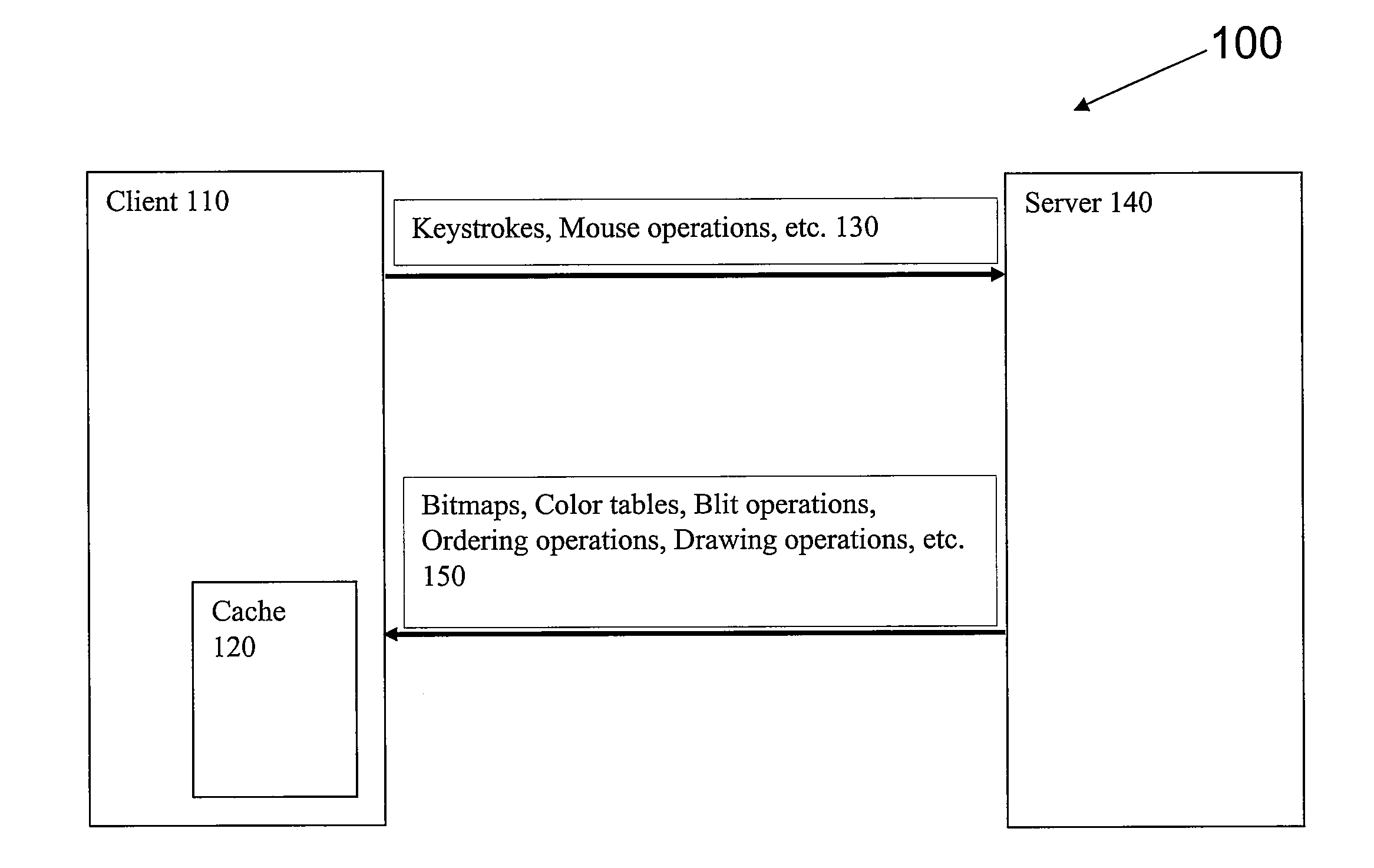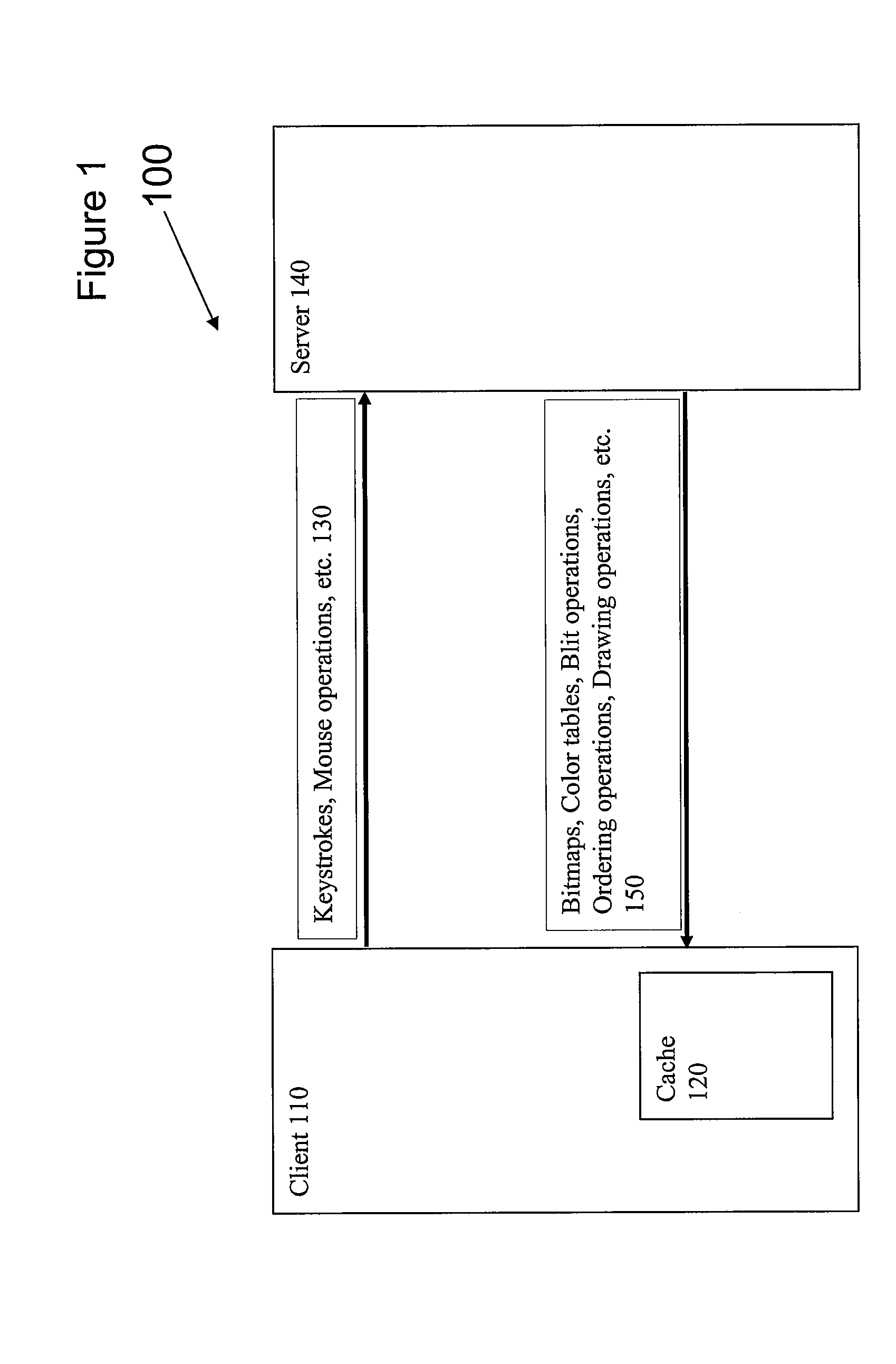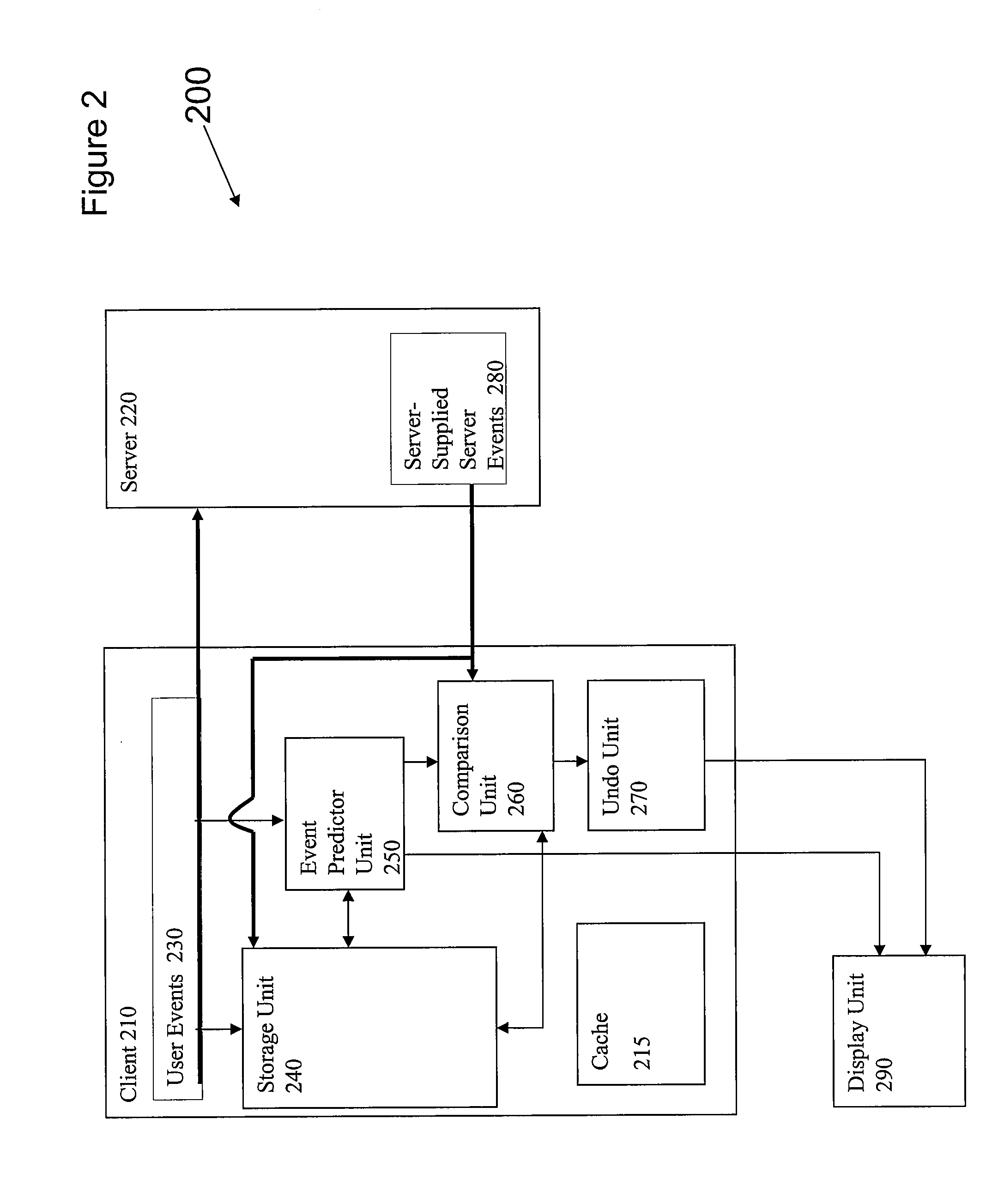System and method for speculative remote display
- Summary
- Abstract
- Description
- Claims
- Application Information
AI Technical Summary
Benefits of technology
Problems solved by technology
Method used
Image
Examples
Embodiment Construction
[0019]FIG. 2 illustrates a remote display system 200 that may be used in accordance with an embodiment of the present invention. In an embodiment, the system 200 may be a remote display system or a system for network computing. The system 200 illustrates a client computer 210 and a server computer 220. The client computer 210 and server computer 220 are in communication with each other through a network. The network may be, for example, the Internet. The client computer 210 may receive current user events 230. The current user events 230 may include user input signals from a keyboard, computer mouse, voice commands, or other input commands. As in the remote display system of FIG. 1, the current user events 230 are communicated to the server computer 220 via the network. The system 200 also includes a cache 215. The cache 215 may be implemented separately or as part of a frame buffer. The cache 215 may also be implemented in software or in hardware.
[0020]In the remote display system ...
PUM
 Login to View More
Login to View More Abstract
Description
Claims
Application Information
 Login to View More
Login to View More - R&D
- Intellectual Property
- Life Sciences
- Materials
- Tech Scout
- Unparalleled Data Quality
- Higher Quality Content
- 60% Fewer Hallucinations
Browse by: Latest US Patents, China's latest patents, Technical Efficacy Thesaurus, Application Domain, Technology Topic, Popular Technical Reports.
© 2025 PatSnap. All rights reserved.Legal|Privacy policy|Modern Slavery Act Transparency Statement|Sitemap|About US| Contact US: help@patsnap.com



